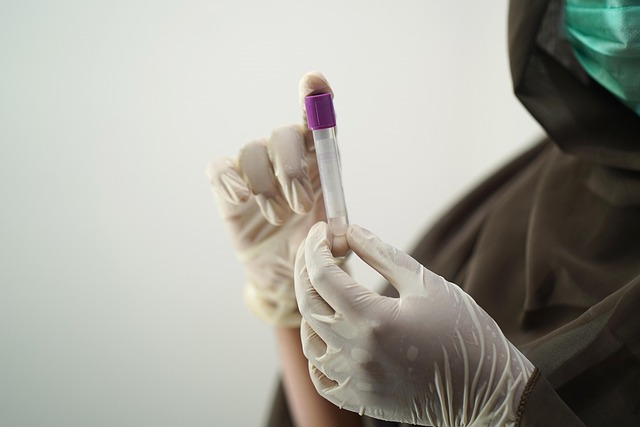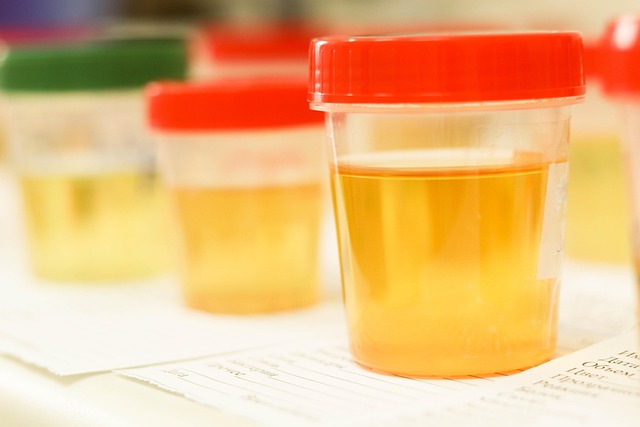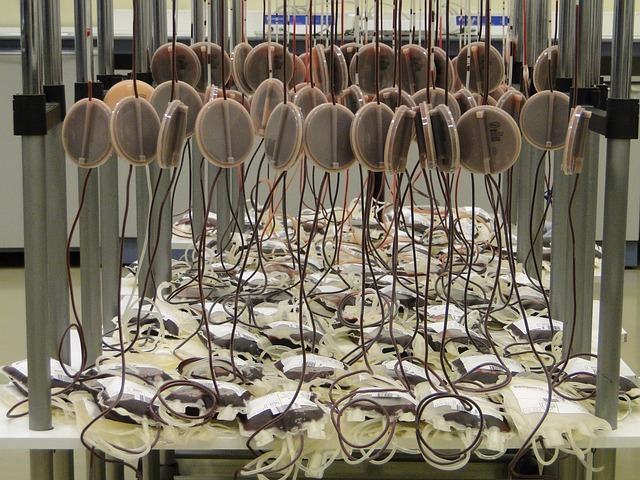Home thyroid blood test kits enable individuals to monitor metabolic health conveniently. Choosing the right kit, understanding test basics, and accurately collecting samples are crucial for reliable results. Interpreting hormone levels (TSH, T4, T3) helps identify potential thyroid issues. Positive or negative results require professional evaluation for accurate diagnosis and personalized treatment. At-home testing facilitates early detection and proactive support for thyroid health through lifestyle adjustments.
“Uncover the power of self-care with our comprehensive guide to DIY thyroid screening kits. Learn how you can take control of your thyroid health from the comfort of your home. This article navigates the process step by step, from understanding thyroid function to interpreting results. Discover how a simple home thyroid blood test can empower you to make informed decisions about your well-being. With accurate guidance on kit selection and sample preparation, we’ll help you transform your healthcare journey.”
- Understanding Your Thyroid Health: A DIY Approach
- Selecting the Right Home Test Kit
- Accurately Collecting and Preparing Samples
- Interpreting Results: What Do They Mean?
- Next Steps After a Positive or Negative Test
Understanding Your Thyroid Health: A DIY Approach

Understanding your thyroid health is a crucial step towards managing and optimizing it. A DIY approach with a home thyroid blood test kit empowers individuals to take an active role in their well-being, especially when considering that thyroid disorders are among the most common medical conditions worldwide. This kit provides a convenient way to check thyroid function without the need for a traditional doctor’s visit.
By utilizing this home thyroid blood test, you can gain valuable insights into your thyroid hormone levels, including T3, T4, and TSH (thyroid-stimulating hormone). These hormones play a pivotal role in regulating metabolism and energy production. With these results, individuals can explore complementary remedies for thyroid disorders, such as natural adjustments to diet and lifestyle, which may include incorporating nutrient-rich foods known to support thyroid health and reducing exposure to environmental toxins. Additionally, understanding your thyroid status through this home test is the first step towards considering natural remedies for low thyroid levels or managing conditions like hyperthyroidism effectively.
Selecting the Right Home Test Kit

Choosing the right home thyroid blood test kit is a crucial first step in evaluating your thyroid health. With numerous options available, it’s essential to understand what each kit offers and aligns with your specific needs. A comprehensive thyroid function panel explanation will typically include tests for T3, T4, and TSH levels, providing an overall picture of your thyroid’s performance.
Before selecting a kit, familiarize yourself with thyroid health 101: what you need to know. Ensure the test provides accurate results that can be interpreted by a healthcare professional. Consider factors like ease of use, required sample type (blood or saliva), and whether it offers additional tests beyond the standard panel. Additionally, checking for user reviews and recommendations from trusted sources can help guide your decision when choosing a home test for hyperthyroidism or any other thyroid-related screening kit.
Accurately Collecting and Preparing Samples

Accurately collecting and preparing samples is paramount when using a do-it-yourself (DIY) thyroid screening kit. To ensure valid results, follow these steps closely. First, wash your hands thoroughly with soap and water to avoid introducing bacteria or contaminants that could interfere with the test. Then, use a clean, dry dropper to collect a precise volume of blood, typically a few drops, from your finger prick. Avoid touching the test strip directly; instead, apply the blood to the designated area on the strip using the dropper. This prevents accidental smudging or cross-contamination.
Next, prepare the sample according to the kit’s instructions, which may involve adding a buffer solution or diluent to ensure the test reacts accurately with your blood. Handle each step with care and note any time delays as specified in the guidelines. Proper collection and preparation are crucial for obtaining reliable results from your home thyroid blood test. Remember that accurate data is key to understanding whether you might experience symptoms of an overactive thyroid gland or benefit from at-home thyroid monitoring, although these kits aren’t typically intended for cancer screening.
Interpreting Results: What Do They Mean?

When interpreting results from your home thyroid blood test, understanding what each value signifies is crucial. Thyroid-stimulating hormone (TSH) levels indicate how well your pituitary gland is regulating thyroxine (T4) production. Normal TSH levels suggest your thyroid is functioning optimally. However, elevated TSH may signal hypothyroidism, where your thyroid doesn’t produce enough hormones. Conversely, low TSH could point to hyperthyroidism, an overactive thyroid.
Apart from TSH and T4, some kits may also measure triiodothyronine (T3). Imbalances here can provide further insights into thyroid health. For instance, low T3 alongside elevated TSH suggests hypothyroidism, while high T3 with low TSH could indicate hyperthyroidism. Remember, these are general guidelines; consulting a healthcare professional for personalized interpretation and diagnosis is essential, especially if results fall outside the reference range. Moreover, understanding how to prepare for a thyroid blood draw and proper test collection techniques can ensure accurate results, similar to how you’d approach any other at-home testosterone test.
Next Steps After a Positive or Negative Test

If your home thyroid blood test results indicate a positive result, it’s important to consult with a healthcare professional to confirm the diagnosis and determine the underlying cause. This is because an elevated thyroxine (T4) or triiodothyronine (T3) level can have various origins, from autoimmune disorders like Hashimoto’s thyroiditis to other medical conditions affecting hormone production. In some cases, lifestyle factors such as stress, diet, or exercise routines might also play a role. Following up with a healthcare provider allows for personalized guidance on managing any identified issues and ensures appropriate treatment options are discussed.
On the other hand, if your test comes back negative, it doesn’t necessarily rule out thyroid-related concerns. Some individuals may experience subclinical hypothyroidism or subtle symptoms of thyroid imbalance that standard tests might miss. Paying attention to signs you need a thyroid blood test, such as fatigue, weight changes, dry skin, or depression, is crucial. Holistic approaches to support thyroid health, including dietary adjustments, stress management techniques, and regular exercise, can be beneficial. The benefits of at-home thyroid monitoring include early detection of potential issues, allowing for timely intervention and promoting proactive healthcare.
A home thyroid blood test can empower you with valuable insights into your thyroid health. By carefully following these DIY screening kit instructions, from choosing the right kit to interpreting results, you take a proactive step towards managing your hormonal balance. Remember, early detection is key, and understanding your thyroid’s function can lead to better overall well-being. Now that you’re equipped with knowledge, it’s time to take charge of your health journey.
